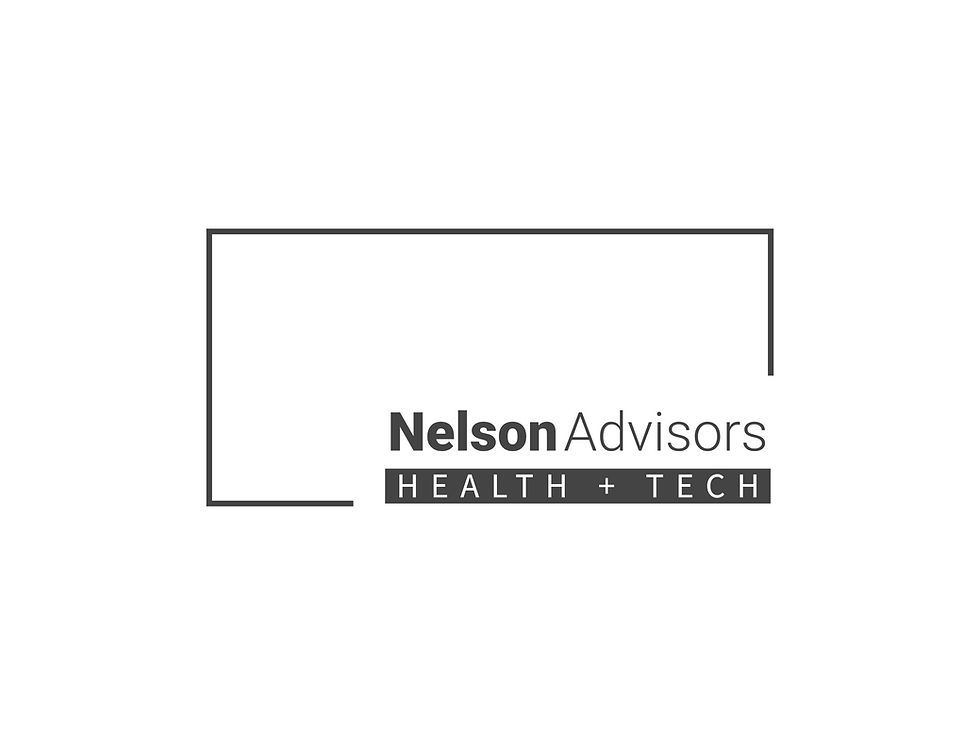The different types of moat creating sustainable competitive advantage in HealthTech
- Lloyd Price
- Feb 8
- 10 min read
Updated: Feb 9

Exec Summary:
In the context of HealthTech, a "moat" refers to a sustainable competitive advantage that protects a company from competitors and allows it to maintain profitability over the long term. Just like a moat around a castle protects it from invaders, a business moat safeguards a company's market share and profits.
Here are some common types of moats in HealthTech:
Proprietary Technology: This could be a unique algorithm, a patented medical device, or a groundbreaking platform that others can't easily replicate. This provides a significant edge in the market.
Network Effects: Some HealthTech solutions become more valuable as more users join. For example, a telehealth platform with a large network of doctors and patients becomes more attractive to new users.
High Switching Costs: If a HealthTech product is deeply integrated into a healthcare provider's workflow or involves a significant investment in training, it becomes costly and disruptive for them to switch to a competitor.
Brand Recognition and Trust: In healthcare, trust is paramount. A company with a strong reputation for quality, reliability, and positive patient outcomes can build a loyal customer base that is less likely to switch to a competitor.
Regulatory Barriers: The healthcare industry is heavily regulated. Obtaining regulatory approvals and navigating complex compliance requirements can create a barrier to entry for new competitors.
Data Advantage: HealthTech companies that collect and analyse large amounts of data can gain valuable insights that inform product development and improve patient outcomes, creating a competitive edge.
Examples of HealthTech companies with strong moats:
Intuitive Surgical: Their da Vinci surgical system and the associated training and support create a high switching cost for hospitals.
Epic Systems: This electronic health record (EHR) giant has a massive network of hospitals and clinics, and their software is deeply integrated into their workflows, creating a strong network effect and high switching costs.
Teladoc Health: As a pioneer in telehealth, Teladoc has built a strong brand and a large network of providers, giving them a significant advantage in the growing telehealth market.
Importance of Moats in HealthTech:
Sustainable Growth: Moats enable HealthTech companies to maintain profitability and market share over the long term, leading to sustainable growth.
Investor Confidence: Investors look for companies with strong moats because they indicate a higher likelihood of long-term success.
Competitive Advantage: Moats provide a crucial competitive advantage in the rapidly evolving HealthTech landscape.
In conclusion, a moat in HealthTech is a crucial competitive advantage that protects a company from competitors and drives long-term success. Building and maintaining a strong moat is essential for any HealthTech company looking to thrive in this dynamic industry.
Nelson Advisors
Healthcare Technology > Mergers, Acquisitions, Growth, Strategy, Investments http://www.nelsonadvisors.co.uk/
We work with Healthcare Technology founders, owners and investors to assess whether they should 'Build, Buy, Partner, Invest or Sell' in order to maximise shareholder value and investment returns. lloyd@nelsonadvisors.co.uk/
We regularly share our thoughts on Healthcare Technology mergers, acquisitions, growth, strategy, investments, market insights & predictions on our blog https://www.healthcare.digital
We publish a weekly LinkedIn Newsletter covering Healthcare Technology mergers, acquisitions, growth, strategy, investments, insights & predictions. Subscribe Today! https://lnkd.in/e5hTp_xb
#HealthTech #DigitalHealth #HealthIT #NelsonAdvisors #Mergers #Acquisitions #Growth #Strategy #Innovation #NHS #VentureCapital #PrivateEquity #UK #Europe

Different types of moats
Here are the different types of moats in HealthTech:
Proprietary Technology: This could be a unique algorithm, a patented medical device, or a groundbreaking platform that others can't easily replicate. This provides a significant edge in the market.
Network Effects: Some HealthTech solutions become more valuable as more users join. For example, a telehealth platform with a large network of doctors and patients becomes more attractive to new users.
High Switching Costs: If a HealthTech product is deeply integrated into a healthcare provider's workflow or involves a significant investment in training, it becomes costly and disruptive for them to switch to a competitor.
Brand Recognition and Trust: In healthcare, trust is paramount. A company with a strong reputation for quality, reliability, and positive patient outcomes can build a loyal customer base that is less likely to switch to a competitor.
Regulatory Barriers: The healthcare industry is heavily regulated. Obtaining regulatory approvals and navigating complex compliance requirements can create a barrier to entry for new competitors.
Data Advantage: HealthTech companies that collect and analyze large amounts of data can gain valuable insights that inform product development and improve patient outcomes, creating a competitive edge.

Proprietary Technology Moat
A proprietary technology moat refers to a unique and defensible technological advantage that a company possesses, making it difficult for competitors to replicate or imitate. This can be achieved through:
Patents: Legal protection granted for inventions, giving exclusive rights to the patent holder for a specified period.
Trade Secrets: Confidential and valuable information that provides a competitive edge, such as formulas, processes, or algorithms.
Unique Technology: Developing a technology that is significantly different or more advanced than existing solutions.
Examples of Proprietary Technology Moats in HealthTech:
Intuitive Surgical (ISRG): The da Vinci Surgical System is a prime example of a proprietary technology moat. Its robotic surgery platform, protected by patents and trade secrets, provides surgeons with enhanced precision and control, making it a leader in the minimally invasive surgery market.
Exact Sciences (EXAS): The Cologuard test for colorectal cancer screening utilizes proprietary technology to detect DNA markers in stool samples. This non-invasive approach, backed by patents and clinical evidence, has given Exact Sciences a significant advantage in the early cancer detection market.
DexCom (DXCM): DexCom's continuous glucose monitoring (CGM) systems for diabetes management rely on proprietary sensor technology and algorithms to provide real-time glucose readings. This technology, protected by patents and ongoing innovation, has made DexCom a leader in the CGM market.
Adaptive Biotechnologies (ADPT): Adaptive Biotechnologies uses a proprietary platform to analyze the human adaptive immune system. This technology, protected by patents and trade secrets, allows for the early detection and diagnosis of diseases like cancer and autoimmune disorders.
NanoString Technologies (NSTG): NanoString's nCounter platform utilizes a unique digital molecular barcoding technology to analyze gene expression and other biological markers. This technology, protected by patents and trade secrets, has applications in various fields, including cancer research and diagnostics.
Benefits of a Proprietary Technology Moat:
Competitive Advantage: Differentiates the company from competitors and attracts customers seeking unique solutions.
Pricing Power: Allows for premium pricing due to the unique value proposition.
Market Leadership: Can establish the company as a leader in its respective market segment.
Barrier to Entry: Creates a significant hurdle for new entrants trying to compete.
Long-Term Growth: Provides a foundation for sustainable growth and profitability.
Challenges and Considerations:
Maintaining the Moat: Continuous innovation and R&D are crucial to stay ahead of competitors and maintain the technological edge.
Patent Protection: Obtaining and enforcing patents can be complex and expensive.
Trade Secret Protection: Safeguarding trade secrets requires robust security measures and confidentiality agreements.
Evolving Technology: Rapid technological advancements can erode the value of a proprietary technology moat over time.
A proprietary technology moat can be a valuable asset for healthtech companies, providing a strong foundation for success. However, it's essential to continuously innovate and adapt to maintain this advantage in the face of evolving technology and competition.
Network Effects Moat
A network effects moat arises when a product or service becomes more valuable to its users as more people join the network. This creates a virtuous cycle, attracting more users and further enhancing the value of the platform. In healthcare technology, this can be particularly impactful due to the interconnected nature of healthcare delivery.
Examples of Network Effects Moats in HealthTech:
Doximity (DOCS): Doximity is a professional networking platform for healthcare professionals. As more doctors, nurses, and other healthcare providers join the platform, it becomes more valuable for everyone involved. This makes it the go-to platform for communication, collaboration, and career opportunities in the healthcare industry.
Teladoc Health (TDOC): Teladoc is a leading telehealth provider. As more patients and healthcare providers join the platform, it becomes more convenient and efficient for both parties to access and deliver care remotely. This creates a network effect, making Teladoc a preferred choice for telehealth services.
Epic Systems: Epic is a dominant player in the electronic health record (EHR) market. As more hospitals and clinics adopt Epic's EHR system, it becomes easier for healthcare providers to share patient information and coordinate care. This creates a network effect, making Epic a preferred choice for healthcare organisations.
23andMe (ME): 23andMe offers direct-to-consumer genetic testing services. As more individuals contribute their genetic data to 23andMe's database, it becomes more valuable for researchers and for individuals seeking insights into their ancestry and health. This creates a network effect, making 23andMe a leading platform for genetic information.
PatientsLikeMe: PatientsLikeMe is a platform where patients with similar medical conditions can connect, share experiences, and learn from each other. As more patients join the platform, it becomes more valuable for everyone involved, providing a sense of community and support.
Benefits of a Network Effects Moat:
Increased Value: The platform becomes more valuable to users as the network grows.
Competitive Advantage: Creates a barrier to entry for new players trying to compete.
User Lock-in: Users are less likely to switch to a competitor as the network grows.
Data Advantage: The platform can collect valuable data on user behaviour and preferences.
Scalability: The platform can scale efficiently as the network grows.
Challenges and Considerations:
Critical Mass: Reaching a critical mass of users is essential to trigger the network effect.
Maintaining Engagement: Keeping users engaged and active is crucial for the network to thrive.
Data Privacy: Protecting user data and ensuring privacy is paramount.
Competition: Competitors may try to replicate the network or offer alternative solutions.
A network effects moat can be a powerful asset for healthtech companies, creating a sustainable competitive advantage and driving long-term growth. However, it's crucial to focus on building a strong and engaged community to fully leverage the power of network effects.
Data Advantage Moat
A data advantage moat refers to a situation where a company possesses a unique and valuable dataset that is difficult for competitors to replicate. This data can be used to improve products, personalise treatments, develop new algorithms, and gain insights into patient behaviour and preferences.
Examples of Data Advantage Moats in HealthTech:
Epic Systems: Epic, a leading provider of electronic health record (EHR) systems, has amassed a vast amount of patient data from its extensive network of hospitals and clinics. This data is used to improve its EHR software, develop new features, and provide insights to healthcare providers.
23andMe: 23andMe, a direct-to-consumer genetic testing company, has built a massive database of genetic information from millions of individuals. This data is used to provide personalised ancestry and health reports, as well as to conduct research on genetic variations and disease risk.
Flatiron Health: Flatiron Health collects and analyses real-world data from cancer patients, including electronic health records, clinical trial data, and patient-reported outcomes. This data is used to improve cancer treatments, accelerate research, and provide insights to healthcare providers and pharmaceutical companies.
Medable: Medable offers a platform for conducting decentralised clinical trials, collecting data from patients remotely using mobile devices and wearable sensors. This data can be used to improve the efficiency and effectiveness of clinical trials, as well as to develop new treatments and therapies.
PathAI: PathAI uses artificial intelligence to analyze pathology images, generating vast amounts of data on disease diagnosis and progression. This data is used to develop new AI algorithms for more accurate and personalised diagnoses.
Benefits of a Data Advantage Moat:
Improved Products and Services: Data can be used to enhance existing products and services, as well as to develop new ones that better meet the needs of patients and healthcare providers.
Personalised Treatments: Data can be used to personalise treatments based on individual patient characteristics, such as genetics, medical history, and lifestyle.
Enhanced Research and Development: Data can be used to accelerate research and development, leading to new discoveries and breakthroughs in healthcare.
Competitive Advantage: A data advantage moat can create a significant barrier to entry for new players, as it is difficult and time-consuming to replicate a large and valuable dataset.
Increased Revenue and Profitability: By leveraging data to improve products, personalise treatments, and enhance research, companies can increase revenue and profitability.
Challenges and Considerations:
Data Privacy and Security: Protecting patient data and ensuring privacy is paramount. Companies must comply with regulations such as HIPAA and GDPR.
Data Quality and Accuracy: Ensuring the quality and accuracy of data is crucial for generating reliable insights.
Data Access and Interoperability: Accessing and sharing data can be challenging due to regulatory restrictions and technical limitations.
Data Analysis and Interpretation: Analysing and interpreting large datasets requires specialised expertise and tools.
A data advantage moat can be a valuable asset for healthtech companies, providing a sustainable competitive advantage and driving innovation in healthcare. However, it's essential to prioritise data privacy and security, ensure data quality, and invest in the necessary infrastructure and expertise to effectively leverage data.

10 Future Moats in Healthcare Technology
The healthcare technology landscape is constantly evolving, and new moats are emerging that will shape the future of the industry. Here are some key areas to watch:
Artificial Intelligence (AI) and Machine Learning (ML): Companies that develop proprietary AI/ML algorithms and models for diagnosis, treatment, and drug discovery will have a significant advantage. These algorithms can be trained on vast amounts of data to identify patterns and insights that are difficult for humans to discern.
Real-World Data (RWD) and Evidence (RWE): Companies that can effectively collect, analyze, and leverage RWD and RWE will be able to improve patient outcomes, personalize treatments, and accelerate research. This includes data from electronic health records, wearables, and patient-reported outcomes.
Decentralised Clinical Trials (DCTs): Companies that offer platforms and solutions for conducting DCTs will be well-positioned to disrupt traditional clinical trial models. DCTs can improve patient access, reduce costs, and accelerate the development of new treatments.
Personalised Medicine: Companies that can combine genetic data, clinical data, and lifestyle information to provide personalised treatments will have a competitive edge. This includes areas like pharmacogenomics, targeted therapies, and precision medicine.
Digital Therapeutics (DTx): Companies that develop evidence-based software applications to treat or manage medical conditions will play a growing role in healthcare. DTx can provide convenient and accessible care, as well as generate valuable data on patient behaviour and outcomes.
Value-Based Care (VBC): Companies that can demonstrate improved patient outcomes and cost savings will be favored in the shift towards VBC models. This includes solutions for care coordination, remote patient monitoring, and population health management.
Cybersecurity and Data Privacy: As healthcare becomes more digital, cybersecurity and data privacy will be paramount. Companies that can provide robust solutions in these areas will be highly valued.
Interoperability and Data Sharing: Companies that can facilitate seamless data exchange between different healthcare systems and stakeholders will be essential for improving care coordination and efficiency.
Patient Engagement and Empowerment: Companies that can empower patients to take control of their health through digital tools and platforms will have a competitive advantage. This includes solutions for patient education, self-management, and remote monitoring.
Virtual and Augmented Reality (VR/AR): Companies that develop innovative VR/AR applications for medical training, surgical planning, and patient rehabilitation will be at the forefront of this emerging field.
These are just some of the future moats that will shape the healthcare technology landscape. Companies that can effectively leverage these areas will be well-positioned for success in the years to come.
Nelson Advisors
Healthcare Technology > Mergers, Acquisitions, Growth, Strategy, Investments http://www.nelsonadvisors.co.uk/
We work with Healthcare Technology founders, owners and investors to assess whether they should 'Build, Buy, Partner, Invest or Sell' in order to maximise shareholder value and investment returns. lloyd@nelsonadvisors.co.uk/
We regularly share our thoughts on Healthcare Technology mergers, acquisitions, growth, strategy, investments, market insights & predictions on our blog https://www.healthcare.digital
We publish a weekly LinkedIn Newsletter covering Healthcare Technology mergers, acquisitions, growth, strategy, investments, insights & predictions. Subscribe Today! https://lnkd.in/e5hTp_xb
#HealthTech #DigitalHealth #HealthIT #NelsonAdvisors #Mergers #Acquisitions #Growth #Strategy #Innovation #NHS #VentureCapital #PrivateEquity #UK #Europe


















































コメント